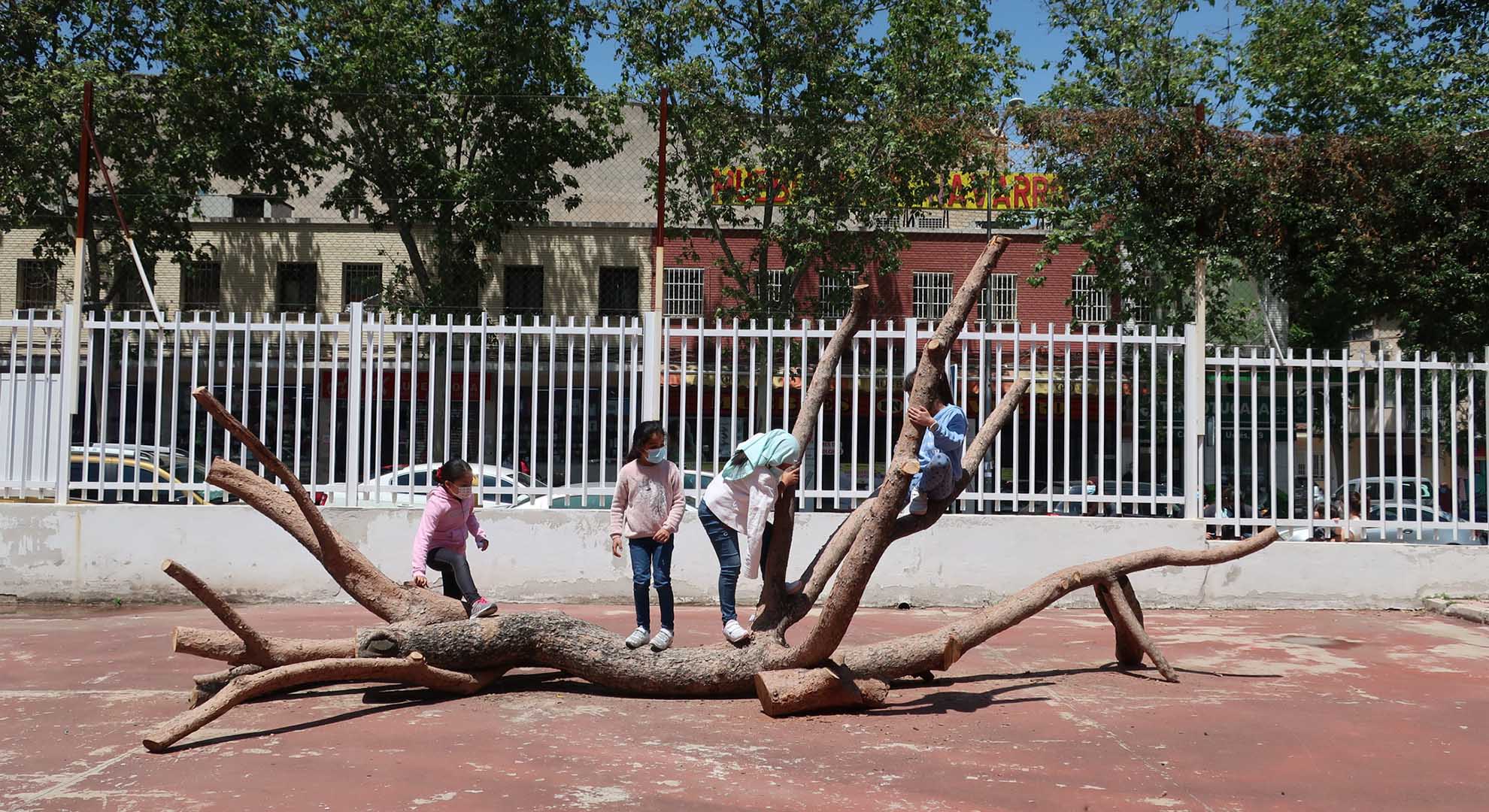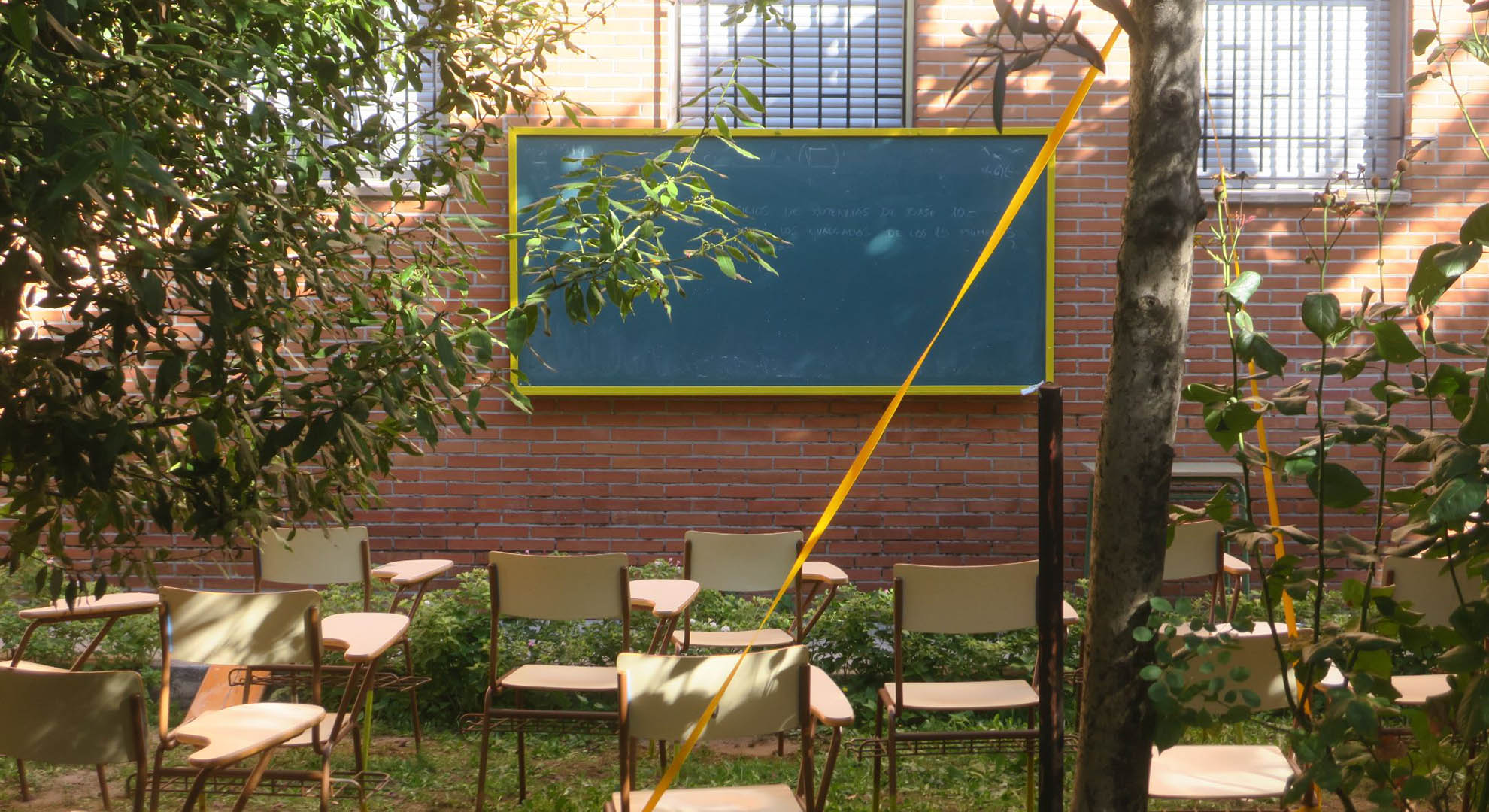Wild Playgrounds Where we Used to Play
Advancing towards a more diverse and greener design for outdoor learning spaces
Outdoor learning spaces linked to formal education have not been conceived as educational spaces and therefore have not been designed (or budgeted) for this purpose. If we focus on official academic centers, there is no definition of “playground” in the Spanish legislation. For this reason, its design is not considered when building new schools, and it ends up being the space that remains between the buildings and the limit of the site.
At Basurama, we have proposed a definition that will allow us to highlight these areas as part of the educational space, and we have included it in a set of guidelines called “Wild Playgrounds” to support institutions when building new schools:
“Playgrounds can be defined as outdoor spaces, roofed or not, belonging to the educational center. These are essential educational and coeducational spaces for the development of boys and girls and fundamental to guarantee their right to play, the interaction between equals—the use of public spaces and social relations—and contact with nature.”
We also think that the design of these outdoor spaces should include the active participation of those who will enjoy them, making them more flexible, but above all guaranteeing inclusion, equity, and the protection of rights, as well as including minimum levels of spatial quality: an adequate ratio of green life, direct sunlight, shade, and water.

Intervention with tree trunks felled by the storm “Filomena” in the República de Chile nursery and primary school, Madrid, 2021, Basurama. Photo basurama.org CCBY-NC-SA 4.0
Education is one of the pillars of society, and the playground and outdoor areas of schools are the first public space of coexistence in our lives. A space for freedom and discovery, but also the first place where our roles are assigned, where conflicts arise, and where informal learning takes place, largely shaping boys’ and girls' socialization. It is vital to give it the value it deserves from the educational point of view and not to think of it only as a space for disconnection or control by teachers.
We like to experiment with the integration of informal learning into formal education. We propose educational projects for children that focus on the process as the first element of learning, advocating experimentation and action, thinking with their hands, activating their bodies, using tools. Processes that turn schoolchildren into critical players and creators. These processes do not have predetermined results or goals that must be achieved. They only intend to open the way—and turn the attention—towards autonomy, trust, teamwork, respect, and shared responsibilities.
We know that this idea of process or allowing for uncertainty is not easy to manage for educational teams. They usually work in more defined frameworks that, unfortunately, leave little space to many other learning processes that are not so evident at first sight. But if one learns to work with uncertainty, suddenly the burden to comply with the curriculum becomes an opportunity to overcome it, making the structures of the educational system more flexible to adapt them to spaces and bodies which, in turn, adjust to these new methodologies. Everything starts to flow smoothly. The lava before the rock, to be a volcano before being a ruin.

Outdoor classroom at the Menéndez Pelayo nursery and primary school, Getafe, 2020, Basurama. Photo basurama.org CCBY-NC-SA 4.0
For all these reasons and in collaboration with municipal schools, the guide with recommendations for the design of outdoor spaces called “Wild Playgrounds: Recommendations for the Design of Outdoor Spaces in Nursery Schools” has been published. This will provide support (and open-mindedness) to the technicians who design these spaces and who have in their hands the ability to influence the future of many little ones.
It is said that a wild place is where nature has regained itself and this is precisely our goal: to make the outdoor spaces of educational centers more diverse, with more space for vegetation, freer. Also with respect to vacant lots, those places that cannot be considered countryside but are not part of the city either and where we have always played. We are interested in the feral, as a symbol of nonregulations, as resistance to the existing and, above all, as it allows us to vindicate biodiversity and vegetation without idealizing nature and excessive landscape design. Wild playgrounds as a symbol of spaces that need to be tamed, free spaces, subject to change, and to the interventions of those who inhabit them.
If we wish to generate a change in the current development model, it is necessary for the educational model to integrate proposals that allow us to generate critical thinking, that allow us to prototype new relations with our immediate surroundings, and above all that are focal points in the search for climate and environmental solutions at a local level.
Main image: Illustration “Wild Playgrounds” by Nerea Sanz. Image courtesy Basurama

